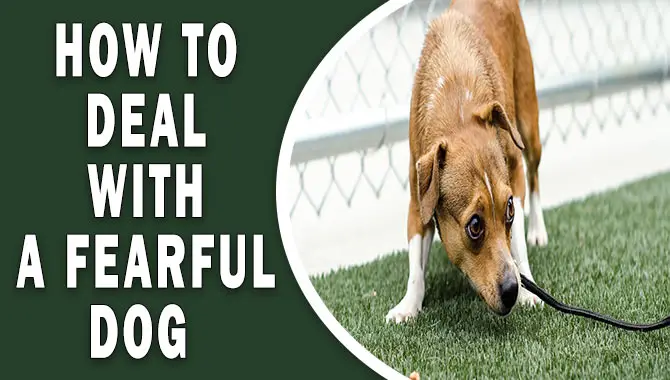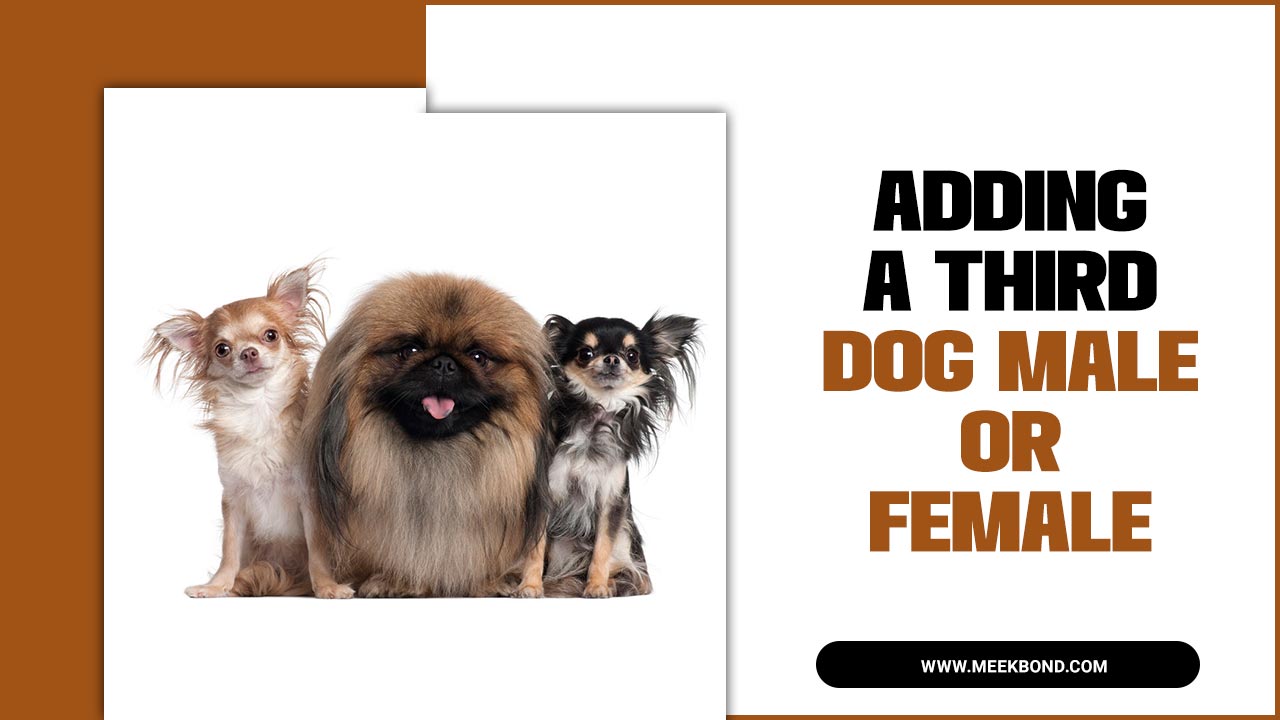If you’re a dog owner, you know how important it is to have a well-behaved dog. One of the most fundamental commands that every dog owner should teach their furry friend is how to heel properly.
It’s a crucial skill that allows you to walk your dog safely and comfortably without any pulling or tugging. However, teaching your dog to heel perfectly can be challenging, especially if you’re unfamiliar with the proper techniques and methods. We will show you how to teach a dog to heel perfectly.
We’ll discuss the essential tools and equipment you’ll need and the most effective training methods and exercises. From understanding the basics of dog behavior to mastering advanced heel training techniques, we’ll cover everything you need to know to train your dog to become a healing pro.

Mastering On How To Teach A Dog To Heel
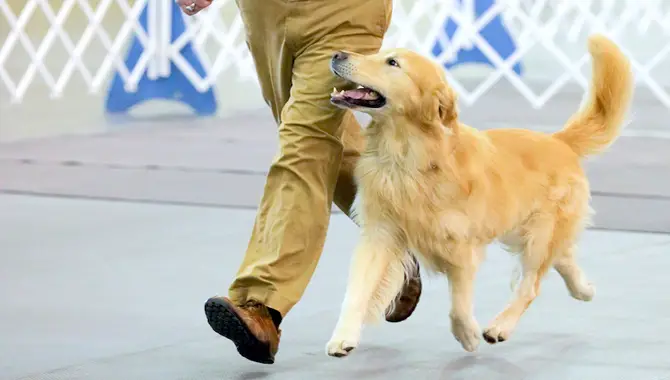
Teaching your dog to heel can be a challenging but rewarding experience. The first step is to make sure your dog understands basic obedience commands such as “sit” and “stay”. Once you have established these foundational skills, you can begin teaching them to heel by using positive reinforcement techniques.
Start by holding a treat in your hand and walking with your dog on a leash beside you. Reward them with the treat when they stay close to your side and avoid pulling on the leash. Gradually increase the distance and duration of the walk, continuing to reward good behavior along the way.
Remember to keep training sessions short and consistent, and always end on a positive note. With patience and persistence, you can master the art of teaching your dog to heel and enjoy many happy walks together.
Basic Obedience Training
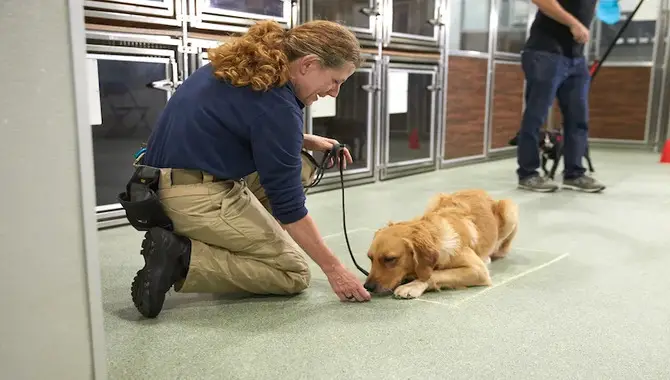
Teaching a pup How To Teach A Dog To Heel is a must-have skill for every pet parent. One of the essential steps in the training process is Basic Obedience Training. This command aims to teach your furry friend to walk on your left-hand side without pulling or lagging. It involves consistency and positive reinforcement techniques like giving verbal cues or using a clicker training method, along with many treats.
Building A Strong Bond With Your Dog
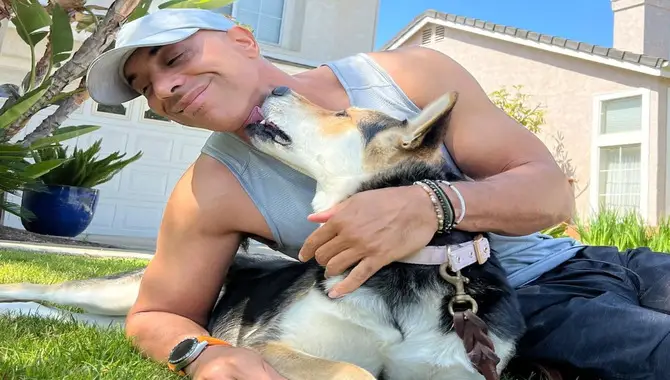
Teaching your furry friend how to heel requires building a strong bond with them first. Encourage good behavior by utilizing positive reinforcement techniques such as treats, verbal praise, and consistency in training sessions.
Starting with short distances and gradually increasing the duration and difficulty of exercises will ensure your pup doesn’t get bored or stressed out easily. Patience and persistence are vital in this training process, as every dog learns at their own pace.
Choosing The Right Collar And Leash
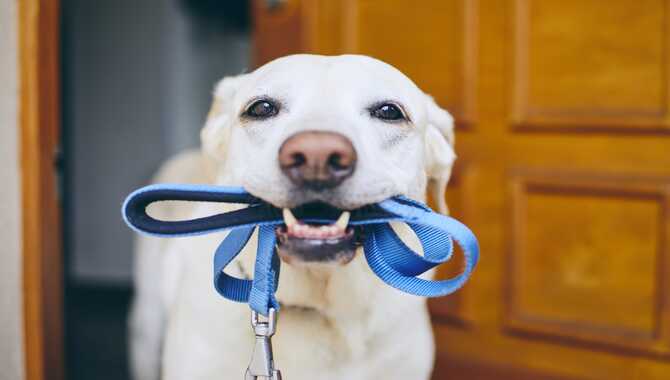
Choosing the right collar and leash is an important first step when teaching your dog to heel. The collar should fit snugly around your dog’s neck without being too tight or uncomfortable. A flat or martingale collar is recommended, as they provide more control without causing harm to your dog.
The leash should also be chosen carefully. A standard six-foot leash is usually sufficient for training purposes. Retractable leashes are not recommended, as they do not provide enough control for healing exercises. Additionally, it is important to choose a leash that feels comfortable in your hand and allows you to maintain control of your dog during training sessions.
Choosing the right equipment is the first step in teaching your dog to heel. Consistent training and positive reinforcement will help your furry friend master this important skill and become a well-behaved companion on walks and outings.
Starting Heel Training
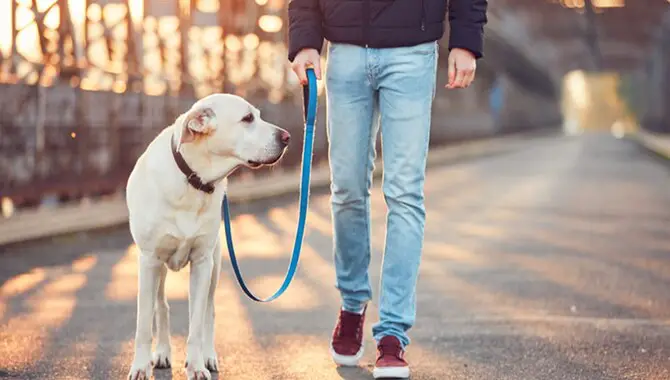
To teach puppies how to heel effectively, starting in a quiet environment using positive reinforcement techniques like treats and verbal praise is important. Encouraging eye contact and reinforcing good behavior with your dog’s name can help your pet learn faster. Begin with short distances and gradually increase the duration of training sessions for better results. Consistency plays a crucial role in this training process.
Teaching Your Dog To Walk On A Loose Leash
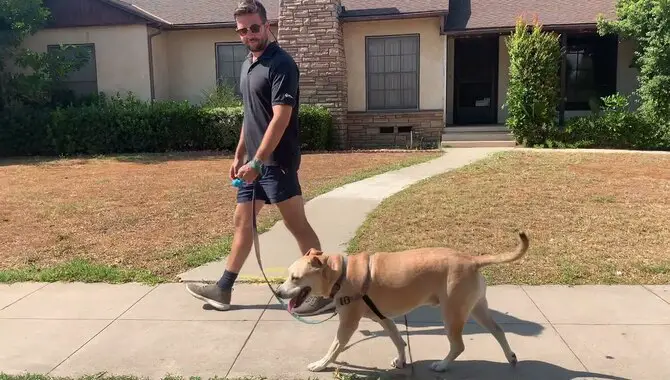
Begin by luring your pup to your left-hand side using a piece of food or a hand target. Reward them with lots of treats and verbal praise when they’re in the correct position. Once they’ve mastered this step, use the cue word “heel” and take a few steps forward with your pup on your left side.
Click and treat at the exact moment your dog is in position. Incorporate positive reinforcement techniques like clicker training and consistency throughout the training process. Add distractions like verbal cues or off-leash training as you progress through the process.
Adding Distractions To Heel Training
Reward your pup with lots of treats and verbal praise when adding distractions to their heel command. For instance, start with small distances before gradually increasing them and eventually pivoting around or walking backward.
Use a cue word or verbal cue along with a gesture to prompt their correct position at the exact moment you want them there. A clicker or personal choice of yours can be effective too. Patience and consistency will benefit puppy breeds prone to boredom or behavioral issues. Remember always to keep your walker safe with a harness!
Advanced Heel Training Techniques
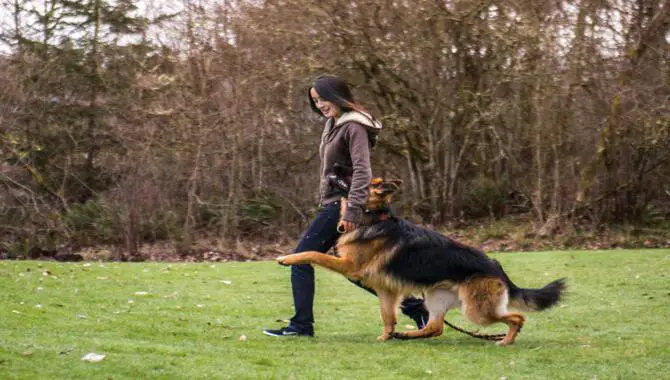
Teaching your furry friend how to heel may seem daunting, but with some patience and consistency in training, using advanced techniques such as verbal cues, hand signals, and positive reinforcement can make all the difference.
Start by having your pup walk on a loose leash on your left-hand side while using a lure or piece of food to guide them into the right position. Reward good behavior using clicks or verbal praise. With time encourage eye contact between you and your pet while moving on to off-leash training. Always be consistent with commands and progress slowly by adding different distractions like walking at a faster pace or in crowded areas.
Troubleshooting Common Problems
Encouraging your furry friend to learn the heel command requires patience and consistency. Avoid pulling on the leash by using a short one and stopping whenever they pull. Encourage movement with positive reinforcement techniques like treats or verbal praise. Gradually increase distractions during training sessions to help your dog stay focused. Consistency is key; make sure everyone interacts with your pet and uses the same commands and techniques for obedience training.
Maintaining Heel Training For A Lifetime
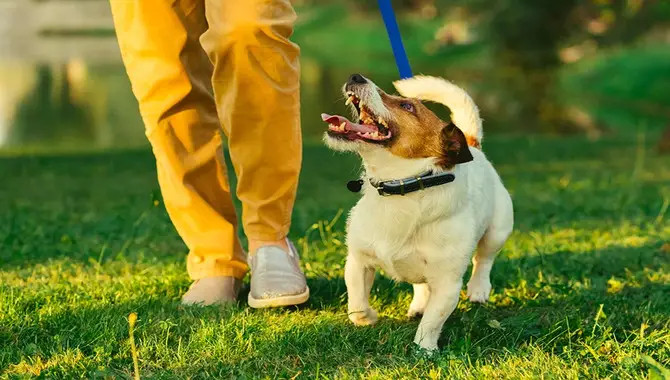
Consistency and positive reinforcement are essential when it comes to maintaining your dog’s healing abilities. Incorporate healing training into your daily routine during walks or entering/exiting doors to keep reinforcing the behavior.
Ensure that everyone handling your pup uses the same commands and techniques for consistency. Add verbal praise or treats for encouragement to prevent boredom on long walks. Practice off-leash training at a dog park once they master basic commands like sit and heel position. Gradually increase distractions to train them for agility competitions.
The Benefits Of A Well-Trained Heel
Teaching your dog to heel can have many benefits for both you and your furry friend. A well-trained heel can help keep your dog safe in busy or crowded areas, as it ensures that they stay close to you and do not run off. It can also make walks more enjoyable, as your dog will be less likely to pull or lunge at other dogs or distractions.
Additionally, a well-trained heel can improve the bond between you and your dog, which requires trust and communication. Teaching your dog to heel takes patience and consistency, but the rewards of a well-behaved companion are well worth the effort.
Tips For Perfecting The Heel Command
To ensure that your pup masters the heel position, teach basic commands through obedience training before progressing to leash training. Clicker training is a great way to reinforce good behavior when starting off-leash.
Once your dog is comfortable with the command, add distractions like other dogs in a dog park or boredom at home. Remember to use personal choice when choosing a collar or harness, but ensure it doesn’t hinder the pup’s movement. Incorporating hand targets or lures using a small piece of food can help encourage good behavior. Consistency is key to maintaining good behavior during training sessions.
Conclusion
Healing is a versatile command that can make your life and your pet’s life easier. It will make walks more enjoyable and help you control your dog in public places. Training them to heel requires patience, consistency, and practice. Remember to reward good behavior and be consistent with your training techniques.
Practicing the heel command can be fun for you and your furry friend. Remember to keep training sessions short, use positive reinforcement, and be consistent in your expectations. With practice, above mentioned on how to teach a dog to heel that Your dog will learn to walk calmly by your side, making walking and outings more enjoyable for you and your furry friend.
Frequently Asked Questions
How Do You Teach A Dog To Heel Easily?
Teaching a dog to heel involves grabbing their attention with a treat or toy, walking slowly while giving the “heel” command, and rewarding them for staying by your side. With consistency and positive reinforcement, gradually increase the distance and duration of healing exercises.
How Long Does It Take To Teach A Dog To Heel?
Teaching a dog to heel can take different lengths of time, depending on the dog. It requires consistency and patience, with several weeks of regular training sessions. Reward-based positive reinforcement is an effective approach to teaching healing.
How Do I Teach My Dog To Walk To Heel?
Teaching your dog to walk to heel involves using a short leash and rewarding good behavior while using verbal cues like “heel” or “let’s go.” Gradually increase the difficulty of the exercise as your dog gets better at walking without pulling or lagging behind.
What Is A Dog Supposed To Do When You Say Heel?
“Heel” is a command that signals your dog to walk beside you with its head up and focus on you. It should not pull or lag behind, and practice should be done at a slow pace before increasing speed. Positive reinforcement, like treats, can help encourage proper healing behavior.
How Can Positive Reinforcement Techniques Be Used To Train A Dog To Heel?
Positive reinforcement techniques can train dogs to heel by rewarding them with treats/praise when walking close without pulling. A clicker or verbal cue can help signal the right behavior while gradually increasing duration and distance. Consistency and patience are essential for success.

Aquarium passion is all about connecting with the aquatic life and providing education to the public on the importance of these creatures. We showcase a wide variety of marine life through our exhibits as well as working with schools to provide unique learning opportunities for students of all ages.


